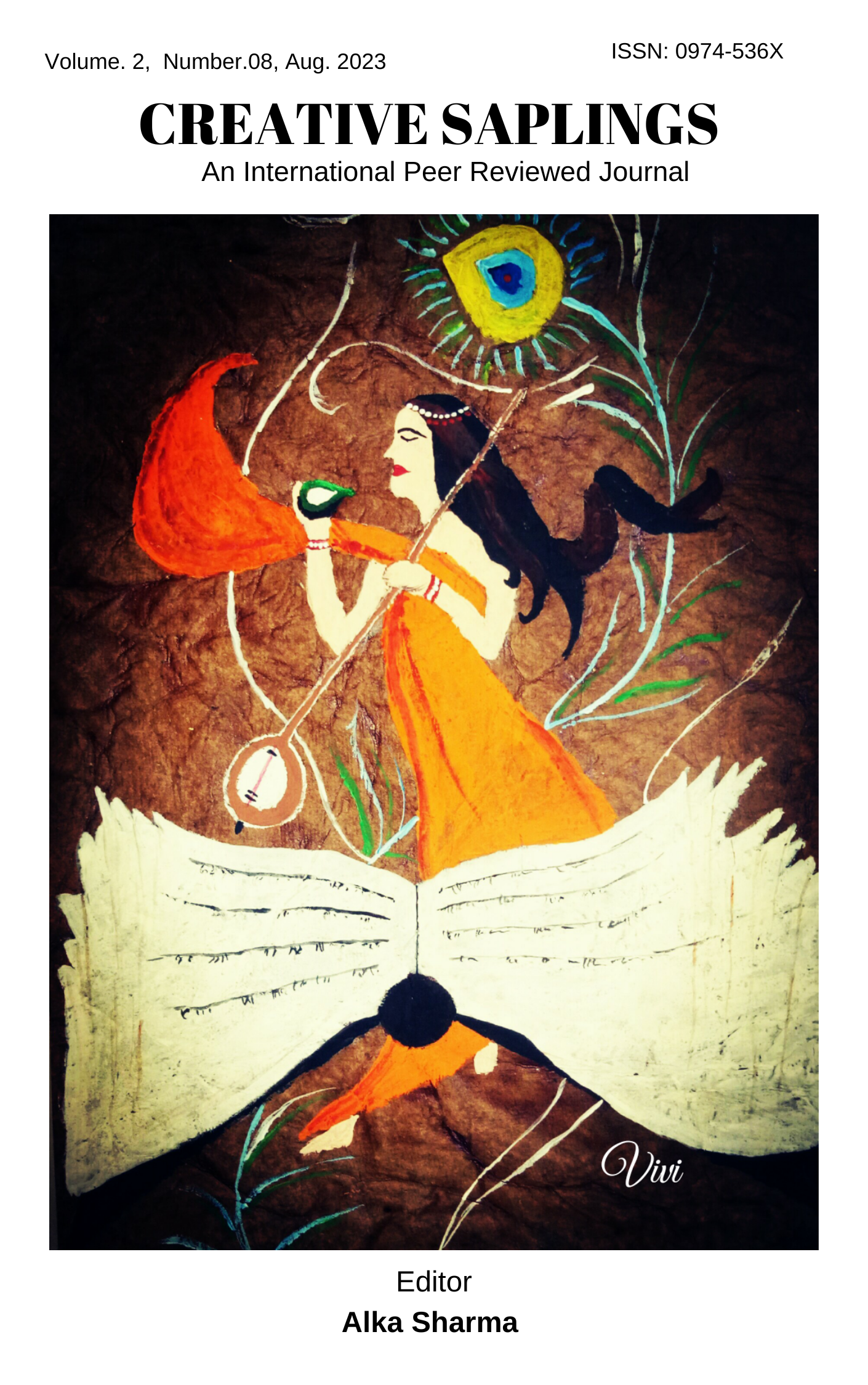Framing the Inner Stature of the (S)heroes: Madhvi, Satyavati, Kunti
DOI:
https://doi.org/10.56062/gtrs.2023.2.05.360Keywords:
Myth-Revisit, Re- Interpretation, Womanistic view, Self-Reflection /probe, Spirituality, Salvation, Sexuality.Abstract
The essence of the modernistic awareness is located amply in the literature of the Indian universal mythical theme. Erudition of ancient texts like Ramayana and Mahabharata, not only is a source of popular culture but also detects concerns related to individuality and authority that have taken over subaltern probing. Patriarchic misogyny claims are elated while the paper attempts to look forward as Lisa Tuttle in her book The Encyclopedia of Feminism urges to look into “new questions for old texts,” prods over the role of women who are commonly considered as the weaker sex and submissive ones. A close analysis can impart a ray of understanding that amidst patriarchal society and regulations, the women in The Mahabharata did occupy prominence in terms of spirituality, salvation and sexuality that what the general assumptions would affirm. Focus is to reveal that women in the epic portray strong will power and ability to change the decisions made by men, thus playing a crucial role in hi(s)story. The present paper probes into a principal concern of the prominent women characters- Madhvi, Satyavati, Kunti along with a few connected instances of Gandhari and Draupadi; their relationship of their self, by their self and for their self.
Downloads
References
Ayyer, Dhanalakshmi (2006) "Women of substance: Satyavati: Blind ambition." The Week 29 October 06.
Bhattacharya, Pradip (2004) "Part III: Five Holy Virgins, Five Sacred Myths." Manushi Mar-Apr, p.p. 27.
Boas, Franz (1898) "Traditions of the Thompson River Indians of British Columbia." Teit, James. Memoirs of American Folklore society. Cambridge:The Riverside Press, vol. VI. 18.
Breaux, Charles (1998) Journey Into Consciousness: The Chakras, Tantra and Jungian Psychology. Delhi: Motilal Banarsidass.
Chaturvedi, Badrinath (2010) "The Women of The Mahabharata-The Question of Truth." Hydrabad: Orient BlackSwan, p.p. 160.
D.H.Monro.(1950) The concept of Myth. 1st of January. <http://journals.sagepub.com/doi/abs/10.1111/j.1467954X.1950.tb02465.x?journalCode=sora>.
Das, Trisha (2009) The MahabharataRe-imagined. New Delhi: Rupa.Co,.
Douglas, Wallace W. (1953) "The Meanings of "Myth" in Modern Criticism." 4th of May. JSTOR. <https://www.jstor.org/stable/434833>.
Graves, Robert (1979) The Greek Myths. Pelican,U.S.A, p.p. 11.
James, E. O. "The Nature and Function of Myth." The Nature and Function of Myth 30 01 2012: 68.
Kees W. Bolle, Richard G.A. Buxton. "Myth." 03 January (2017). Encyclopædia Britannica. <https://www.britannica.com/topic/myth>.
M.M.Gehlot (2006) "Mahabharata: Spiritual and Symbolic Significance." Textuality and Inter-textuality in the Mahabharata. Ed. Pradeep Trikha. New Delhi: Sarup & Sons.,p.p. 53-57.
Molina, Noelia (2019) Motherhood, Spirituality and Culture. USA: Routledge,p.p 212.
Online Etymology Dictionary. <https://www.etymonline.com/word/myth>.
P.Lal (1968) Mahabharata of Vyasa Translated from the Sanskrit of Vyasa by P. Lal. Vol. 145. Writers Workshop.
Partenie, Catalin 21 September (2018) "Plato's Myths."The Stanford Encyclopedia of Philosophy. Ed. Edward N. Zalta. <https://plato.stanford.edu/archives/fall2018/entries/plato-myths/>.
Plato's Myths. 10 July 2018. <https://plato.stanford.edu/entries/plato-myths/>.
Rajagopalachari, Chakravarti (2005) Mahabharata. Bombay: Bharatiya Vidya Bhavan, p.p 46.
Strass, Claude Levis (1955) "The Structural Study of Myth." American Folklore Society 68 (270): 428.
Downloads
Published
Issue
Section
License
Copyright (c) 2023 Anila A. Pillai

This work is licensed under a Creative Commons Attribution-NonCommercial 4.0 International License.





